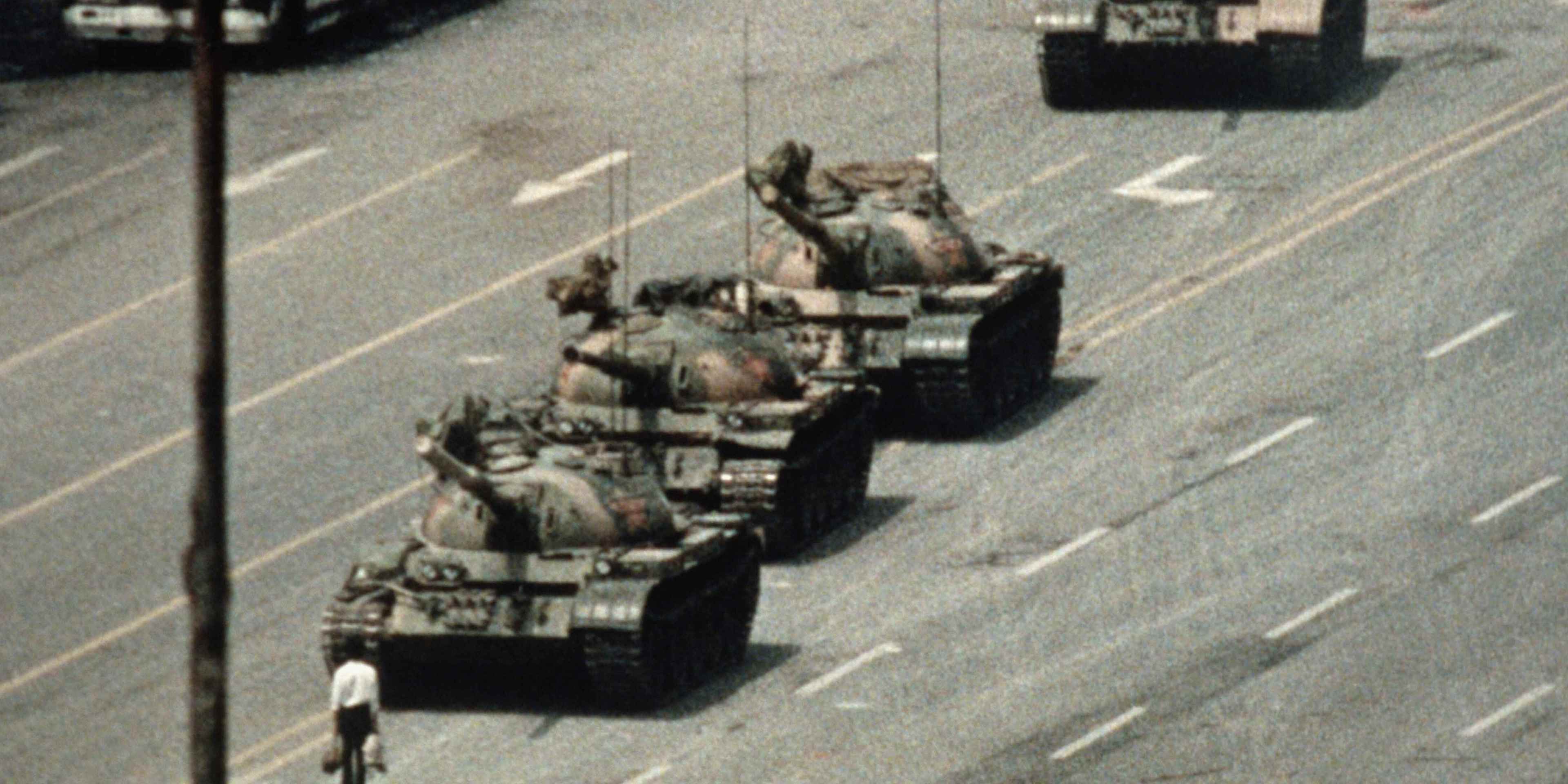After Chinese officials—alarmed at the June 1989 pro-democracy demonstrations in Beijing’s Tiananmen Square—ordered soldiers and police to shoot and kill student protesters, one solitary man stood out from the crowd.
Historian and journalist T.D. Allman, who witnessed the uprising from the balcony of a Beijing hotel room, has described him as the “true exemplar” of the Chinese protesters’ heroism.
Time magazine has referred to him as the “Unknown Rebel,” and included him in its list of the 100 most important people of the 20th century.
But the identity of the lone, brave protester—captured on film and in countless photos giving a defiant “stop” sign to a phalanx of Chinese tanks rumbling through Tiananmen Square—remains shrouded in mystery.
To most, he is known simply as “Tank Man,” a nickname given him by the British tabloids. His gesture has since become an enduring symbol of the bloody uprising in Beijing.
His defiance slowed the government crackdown on Tiananmen Square protesters.
As documented by film taken at the time, Tank Man – wearing a simple white shirt, dark pants and carrying two shopping bags – initially halted the tanks by displaying the palm of his right hand in what is universally recognized as the signal for “stop.”
The tanks did indeed stop, and Tank Man was seen climbing up the front of the lead tank, and standing on it for several moments, during which time he spoke with a crew member. Though the tanks attempted to maneuver around Tank Man, he repeatedly moved to block their path.
Soon, two men—possibly government officials—forcibly removed Tank Man from his position and carried him off, after which the tanks proceeded on their way.
Tank Man has never been positively identified.
In the aftermath of the incident, the protester received worldwide acclaim; however, his identity has still not been confirmed.
The Sunday Express, a British publication, reported that summer that his name was Wang Weilin, a 19-year-old student arrested for “political hooliganism.” Varying reports suggested the student was either imprisoned or executed.
Chinese officials have refused to confirm his name or whereabouts in response to numerous queries from Western journalists in the years since the incident. In fact, they claim they were unable to locate him.
It could be argued, though, that Tank Man’s name doesn’t matter as much as his act—all images of which are still banned by China’s repressive Communist regime.









